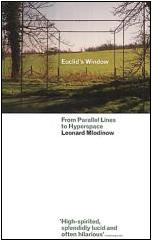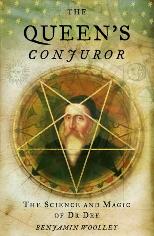book review
Euclid defined what later became known as the Golden Ratio thus:
A straight line is said to have been cut in extreme and mean ratio when, as the whole line is to the greater segment, so is the greater to the lesser.
Anyone who thought geometry was boring or dry should prepare to be amazed. Despite its worthy cover this book is exactly what its title says - a story - and the plot of this story involves life, death and revolutions of understanding and belief, and stars the some of the most famous names in history.
During September and October, the Isaac Newton Institute for Mathematical Sciences showed a small exhibition of two suites of photo-etchings with mathematical components by the Canadian artist Catherine M Stewart, who studied both maths and physics in the course of her undergraduate degree at the University of Toronto. Elements of Grace is a collection of 12 photo-etchings which combine diagrams from Newton's Principia Mathematica (1729) with photodetails of the human body.
Despite its title, Carl Djerassi's latest play, Calculus, is more like a lesson in history or even psychology than one in mathematics. This is because Djerassi's intention was to explore the moral calculus that was involved in the discovery of the mathematical technique, rather than the technique itself.
Although some people might find maths deadly boring, very few of us would think it could ever be deadly dangerous. But deadly it was in 16th century England, and one of those who followed the dangerous and mystical path of a mathematician was John Dee, the subject of this book.
Sherman Stein's motivation for writing this book grew out of a course on the history of calculus for undergraduates he taught for several years. Before that, like most of us, he didn't know where Archimedes' reputation as one of the greatest mathematicians of all time had come from - and now he wants us to know too.
First the executive summary: read these excellent books, and make sure all your friends and relations and bright pupils (if you are a teacher) or teachers (if a bright pupil) do so too. Mathematical Vistas (MV) is the sequel to the same authors' earlier Mathematical Reflections (MR). Each book is a series of explorations of mathematical topics, informed by a definite idea of what mathematics is, and how it should be taught.
If you watch a steam engine, you may not know how it works but you can soon get a fairly good idea of its behaviour, and you can predict its future behaviour accurately. Even though you don't understand its workings, you can see it's a pretty simple machine, so you can trust it to behave in a simple way: you have confidence in your predictions based on a short sample of its behaviour.
As Tony Gardiner says in at the beginning of this book, "the last ten years or so has seen a remarkable blossoming of public interest in mathematics [but] most of the books produced have been for adults, rather than for students. Moreover, most are in prose format - for those who want to 'read about' mathematics, rather than those who want to get their hands dirty solving problems."
This book is built on an extended metaphor, which casts equations as the poetry of science. According to the editor Graham Farmelo (head of Science Communication at the Science Museum in London), great equations and great poems are alike in a number of ways. Both suffer if anything is added, changed, or taken away, both are a rich stimulus to the prepared imagination, and both draw much of their power from their conciseness.
If "How to solve it" really contained an infallible recipe for doing so, mathematics would not be mathematics and the world would be quite different. Of course it doesn't - it can't - but it can - and does - contain a great deal of food for thought for the budding mathematician.
Like many other Central Europeans, Pólya relocated to the US at the beginning of the Second World War. There he worked at Stanford University and wrote this immensely successful book (more than a million copies sold) in 1945.
This book attempts to take a firm grip on a corner of the slippery issue of consciousness. It is directly related to Roger Penrose's earlier, hugely successful work, The Emperor's New Mind. Although much space is devoted to painstaking replies to the criticisms made of the earlier book, this is not simply a sequel. It contains a number of new ideas, some of which are still being actively debated seven years after the book was first published.










